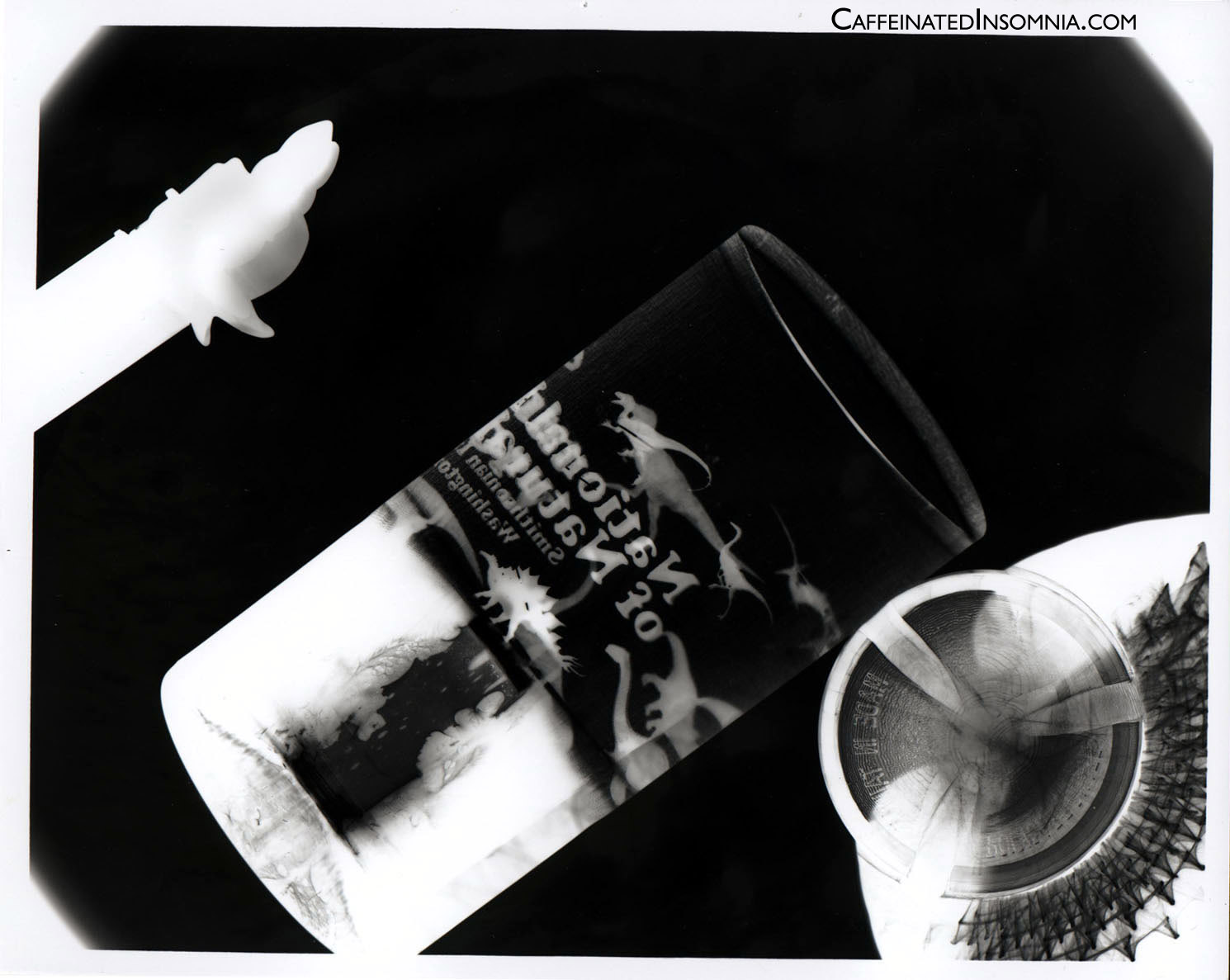
I really enjoyed this weeks in-class demonstration of how to create rayograms. The process itself was simple enough, turn off the lights to prevent exposing the film before you are ready to do so, place objects onto film while trying not to kill yourself by tripping over objects in complete darkness, flip lights on and off at lightning speed, and then start the tedious process of developing the film. Wash, rinse, and repeat. No, wait… that’s a different process entirely. Trying to develop the film for just the right amount of time was really tricky, since it was dark and the red light from the safety light did not really show much of what was going on, but for our first try, I think my group’s turned out pretty well.
Will had brought some of these notebook paper hole repair stickers as one of his items for the project, and they produced a really nice effect on the film, especially when some of them were complete circles and others went more at an angle off of the side of the film strip. The strips of film that had already been processed also made a really nice effect when they were placed over the undeveloped film. Our strip of already developed film had bands where the light had been able to get through to our film underneath, and it just looked really neat.
Two things that provided the best look in the experiment were hay, which Will had also brought with him, and the short grained rice that had been provided as an item for the entire class to use. The hay ended up producing a smoky, wispy effect on the film. It was just a really cool texture, overall. It could not really be seen by just looking at the film strip with a little bit of backing light, but when held up to the light, the detail was really noticeable and was really fine. I think the short grained rice had to have been my favorite item overall, though. Depending on how the individual grains fell, little bits of light would fall between the grains, and it ended up producing a really nice texture and overlapping effect on the film.
The glass beads provided for use, both the solid ones and the slightly cracked ones, produced an okay effect with nice curves and crescent moon shapes, but I was kind of expecting more fragmentation of light, which was produced more by the shards of beads than the actual beads themselves. Perhaps that is something that I will play around with more when we are able to do a second film strip.
With what Will and I were able to do with the items last week, I think we have a lot of elements that will incorporate into our film really well, and we both have ideas for other items that could enhance the textural aspect of the film even more, such as more masking tape and other things with faint textures that might be picked up on the film when the light develops it.
Overall, I would have to say that this process has been my favorite one so far. Even though I really enjoyed the magazine transfers, since those could really be manipulated to produce so many different desired effects, I think the actual development process of the rayograms was much more satisfying, and it was much more varied in the kinds of effects that could be produced, whereas with magazine transfers, everything was kind of dependent on whatever kind of magazines happened to be available.

No comments:
Post a Comment